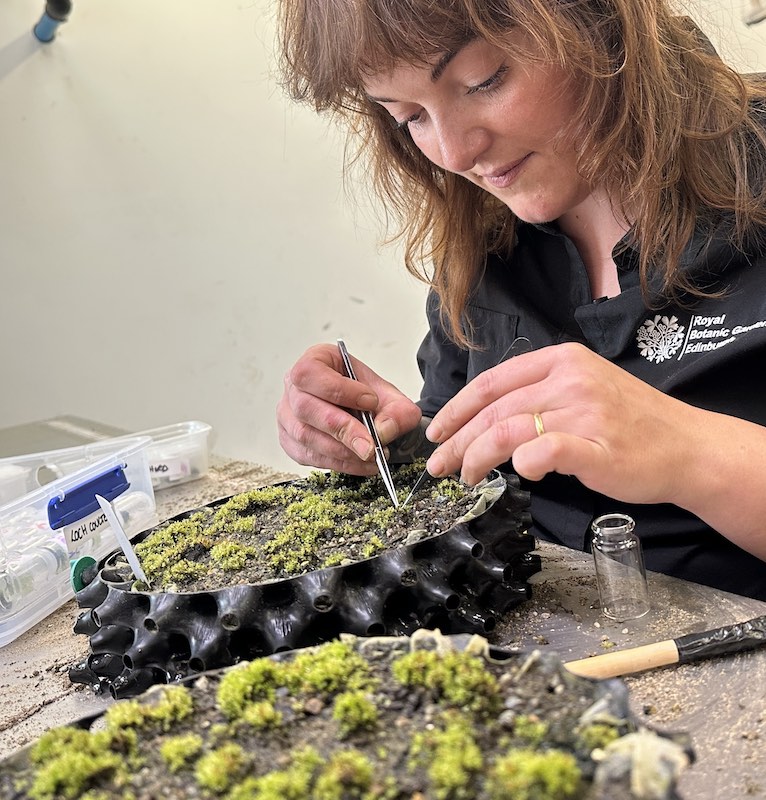An extremely rare moss seen in just one UK location over the past 30 years has been successfully moved to two new sites in a bid to save it from extinction.
Round-leaved bryum was rediscovered at Threipmuir Reservoir, near Balerno in Edinburgh, in December 2023 by David Chamberlain of the Royal Botanic Garden Edinburgh (RBGE).
Since then, experts from NatureScot and RBGE have cultivated thousands of new shoots and relocated them to North Third and Loch Coulter reservoirs, near Stirling, areas confirmed to have the right conditions for survival.
The moss, which thrives in wet mud and only appears when water levels drop, had previously only been confirmed at Threipmuir since 1987.
That site is part of the Balerno Common Site of Special Scientific Interest.
RBGE horticulturist Rebecca Drew led the cultivation work, designing trials to understand exactly what the moss needs to grow.
Working with students, the team raised a handful of clusters into a thriving nursery population.
“We had to remove it from its natural habitat and into our research facilities,” Drew said.
“There, through our expertise in conservation horticulture, we were able to cultivate this extremely rare species and move it into safe new sites, giving it a chance of survival.”
Thousands of shoots are now growing in a specially created artificial mud bed within RBGE’s nursery.
The plants have been carefully maintained to ensure they remain uncontaminated and free from competing species.
Kat O’Brien, Bryophyte, Fungi and Lichen Adviser at NatureScot, said moss translocations are rare, as most fail to adapt to new conditions.
But this species has one key biological trait in its favour it reproduces by cloning, which made cultivation easier.
“The round-leaved bryum is unlikely to spread naturally,” she said.
“But we’re hopeful that our efforts will give this incredibly rare moss the boost it needs to survive.
“We’ll be monitoring it for the next five years.”
Scottish Water’s technical team helped identify the new homes for the moss.
Euan Innes, the utility’s Technical Team Manager, said the project aligned well with their broader biodiversity goals.
“It’s a big positive for Scottish biodiversity and a great example of joined-up partnership working,” he said.
There are more than 900 species of moss in Scotland, and round-leaved bryum is among the rarest.
While often overlooked, mosses are a vital part of ecosystems and can thrive in harsh environments from mine spoil to rooftops.





